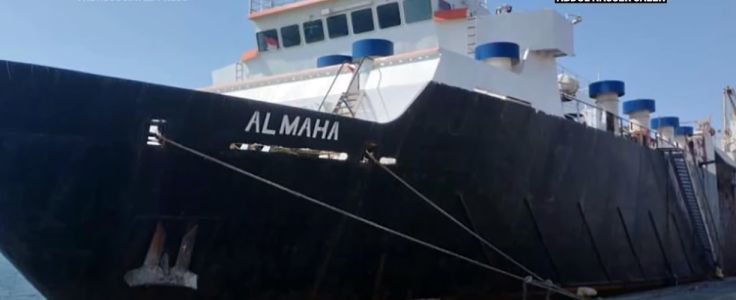 Back in 2021, we posted about Mohammed Aisha, the First Officer of the MV Aman, who had been stranded on the ship for almost four years, stuck off the Egyptian coast after the ship’s owners in Bahrain faced financial difficulties. He was finally freed and flown home to Syria.
Back in 2021, we posted about Mohammed Aisha, the First Officer of the MV Aman, who had been stranded on the ship for almost four years, stuck off the Egyptian coast after the ship’s owners in Bahrain faced financial difficulties. He was finally freed and flown home to Syria.
Now, there are reports in the media of Abdul Nasser Saleh who finally returned home to Egypt after spending almost a decade working without pay on the cargo ship Al-Maha, abandoned by its owner at ports along the Red Sea.
Sadly the problem of ship owners abandoning crews aboard ships has only gotten worse. As reported by the Independent, Saleh’s plight is part of a global problem that shows no signs of abating. The United Nations has logged an increasing number of crew members abandoned by shipowners, leaving sailors aboard for months and sometimes years without pay. More than 2,000 seafarers on some 150 ships were abandoned last year.
The number of cases is at its highest since the U.N.’s labor and maritime organizations began tracking abandonments 20 years ago, spiking during the global pandemic and continuing to rise as inflation and logistical bottlenecks increased costs for shipowners. Cases have touched all parts of the globe, with workers abandoned on a fish factory ship in Angola, stranded on an icebreaker in the Netherlands and left without food or fuel in Istanbul.
Cases first jumped in the early days of the pandemic, at a time when canceled shipments, port delays and quarantine restrictions pushed shipping traffic into disarray. At the same time, demand for goods by homebound consumers led to a rush of new orders for ships. But global trade soon shrank, and combined with spikes in fuel and labor costs, many of those new vessels are now at risk of being idled.
The increase in the number of cases logged in recent years is also due to better-reporting efforts by the International Maritime Organization and the International Labor Organization — the two U.N. agencies responsible for tracking abandonments. With seafarer advocates, they’ve worked to identify cases and assist abandoned crews.
Cases last year were “alarmingly surpassing the previous year’s record,” the ILO and IMO said in a report this winter.
Many ships that are abandoned are barely seaworthy and servicing less profitable routes unattractive to the world’s major container lines. They represent a fleet of smaller companies sometimes operating on the edge of legality, for which a minor financial hit can lead to a cascade of unforeseen problems.
Owners might decide it’s cheaper to abandon a ship than try to save it.
Even sailors who win promises from shipowners to pay their wages sometimes are left waiting for money after they leave their ships. Court cases to seize or auction derelict ships can take years to resolve. Other times, offers aren’t made in good faith. Some workers have departed for the airport only to find they were given fake plane tickets, union inspectors said.
Mohammad Aisha, who we posted about in 2021, still has not been paid for his labor on the MV Aman. Despite drawing international attention when reports surfaced, the case is still working its way through the courts. He has not yet been paid, the International Transport Workers’ Federation (ITF) said.
Stuck at sea for years: Plight of crew members abandoned by ship owners
Thanks to Alaric Bond for contributing to this post.
